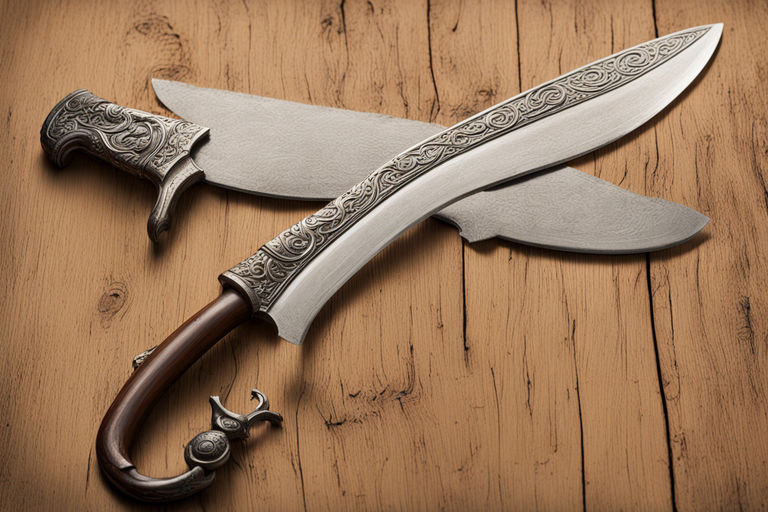
Several key distinctions set these swords apart.
• Length and Weight: The Tachi is generally longer and heavier than the Katana. Its blade is around 30-36 inches compared to the Katana’s 24-28 inches. This extra length made the Tachi more suitable for mounted combat, where sweeping cuts were advantageous.
• Curvature: The Tachi has a deeper curvature than the Katana. This design, again, caters to mounted warfare, allowing for powerful slashing attacks from horseback.
• Wearing Style: The way Samurai warriors wore these swords differed. During the Heian period in the 10th century, warriors developed the Tachi as the primary weapon for cavalry, predating the Katana. In contrast, during the Kamakura period in the 14th century, warriors favored the Katana for its effectiveness in close-quarter combat.
• Historical Period: The Tachi, hailing from the 10th century Heian period, has a claim to fame as the earlier design. This longer sword was a favorite among samurai on horseback, allowing for powerful slashing attacks from a mounted position. Centuries later, during the 14th century Kamakura period, the Katana emerged. Shorter and more manageable, the Katana thrived in close-quarter combat, making it a valuable tool for samurai on foot.
Katanas and tachis are both famous Japanese swords, important to Japanese history and sword making. Even though they were both used by samurai warriors, they’re actually quite different. Katanas and tachis have different designs, were used in different ways, and come from different times in history. Learning about these differences helps us appreciate how cool, dangerous, and beautiful these swords truly are.




